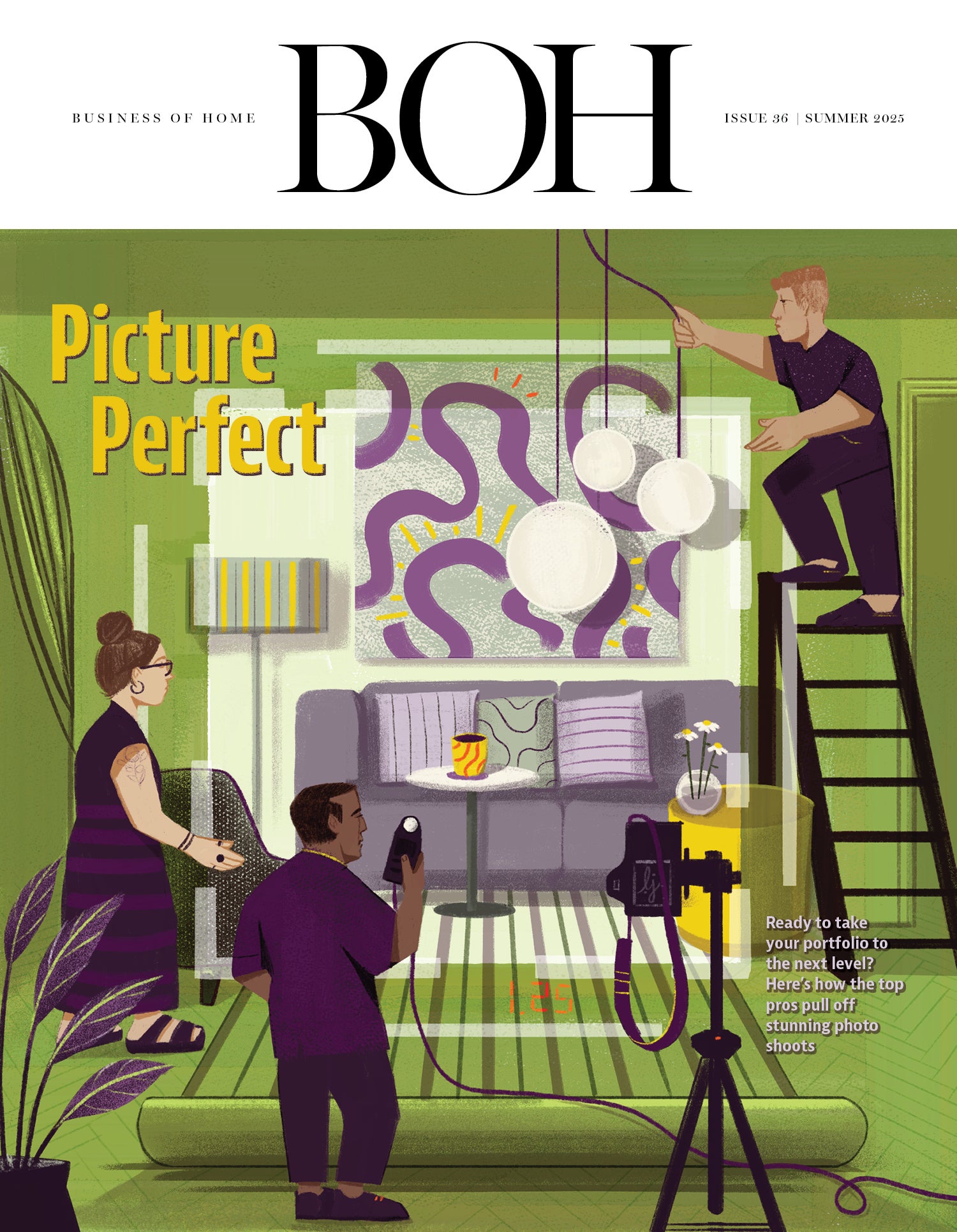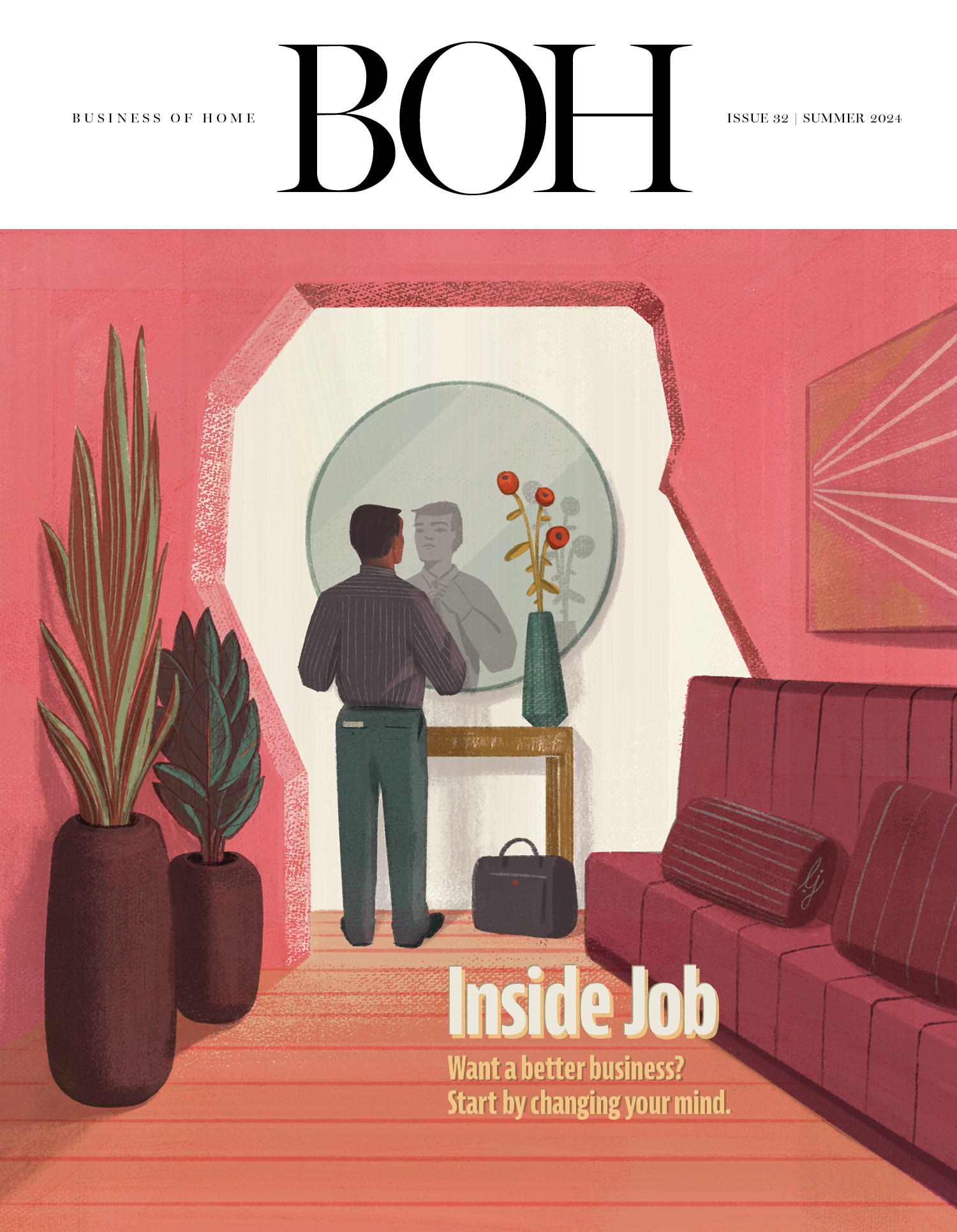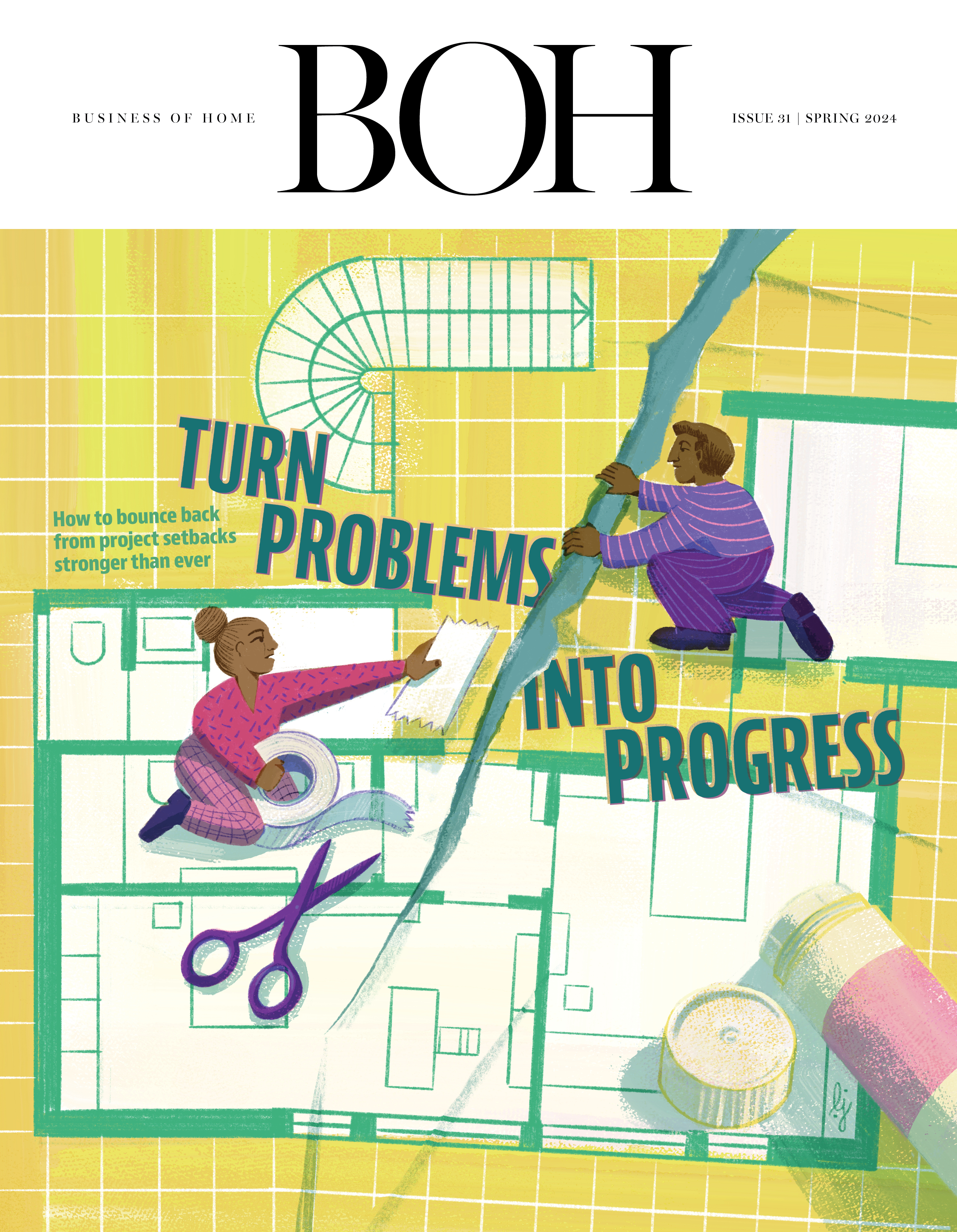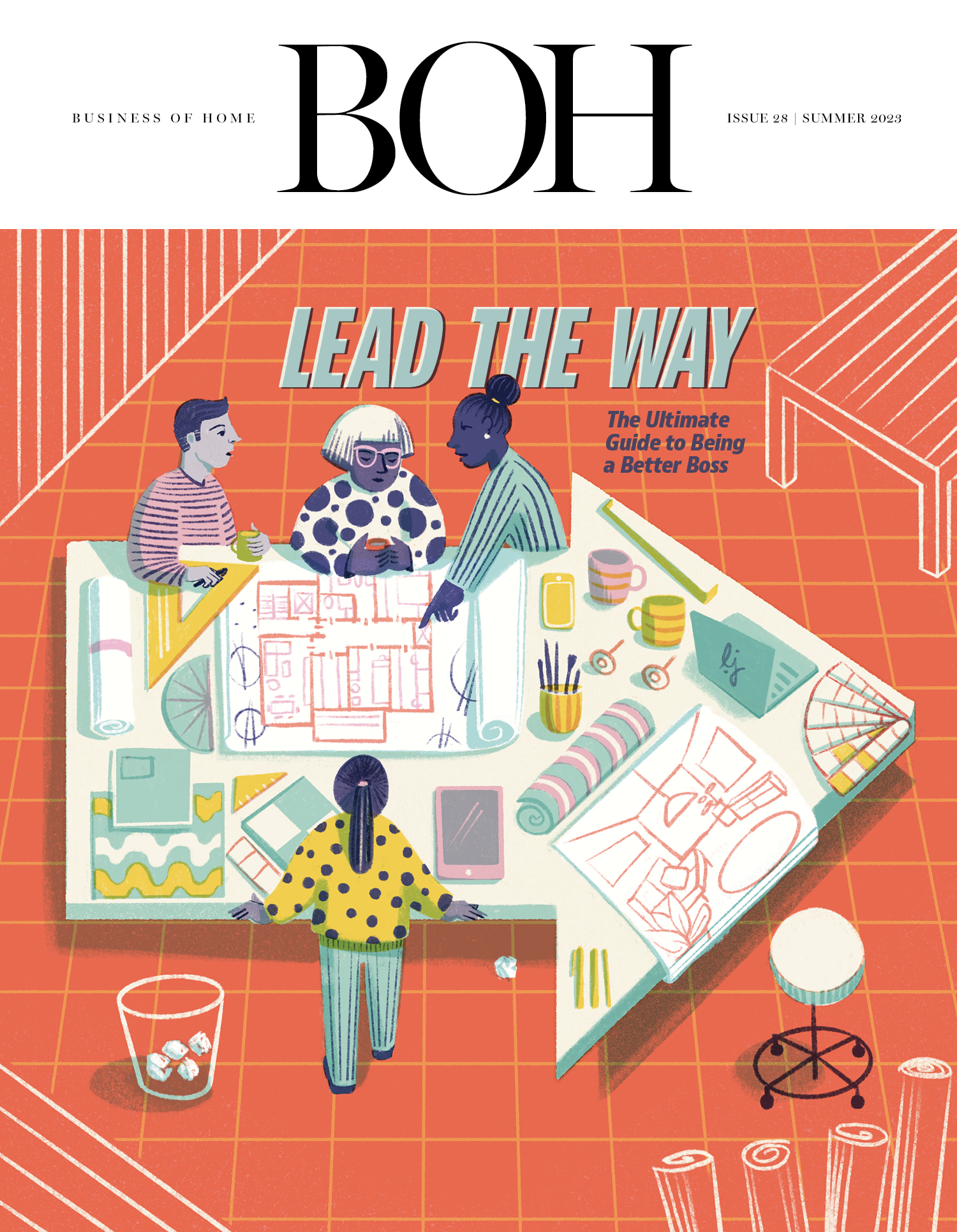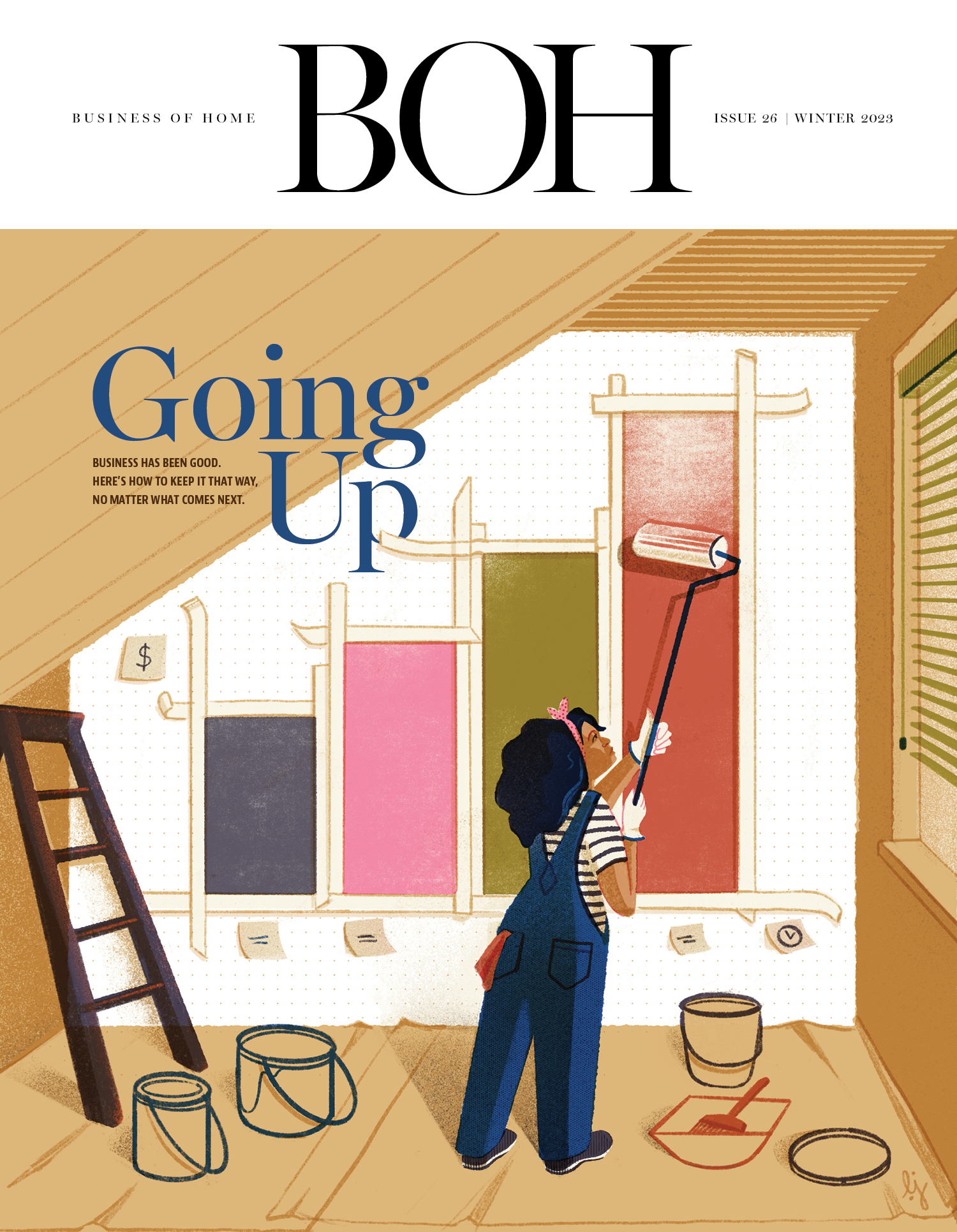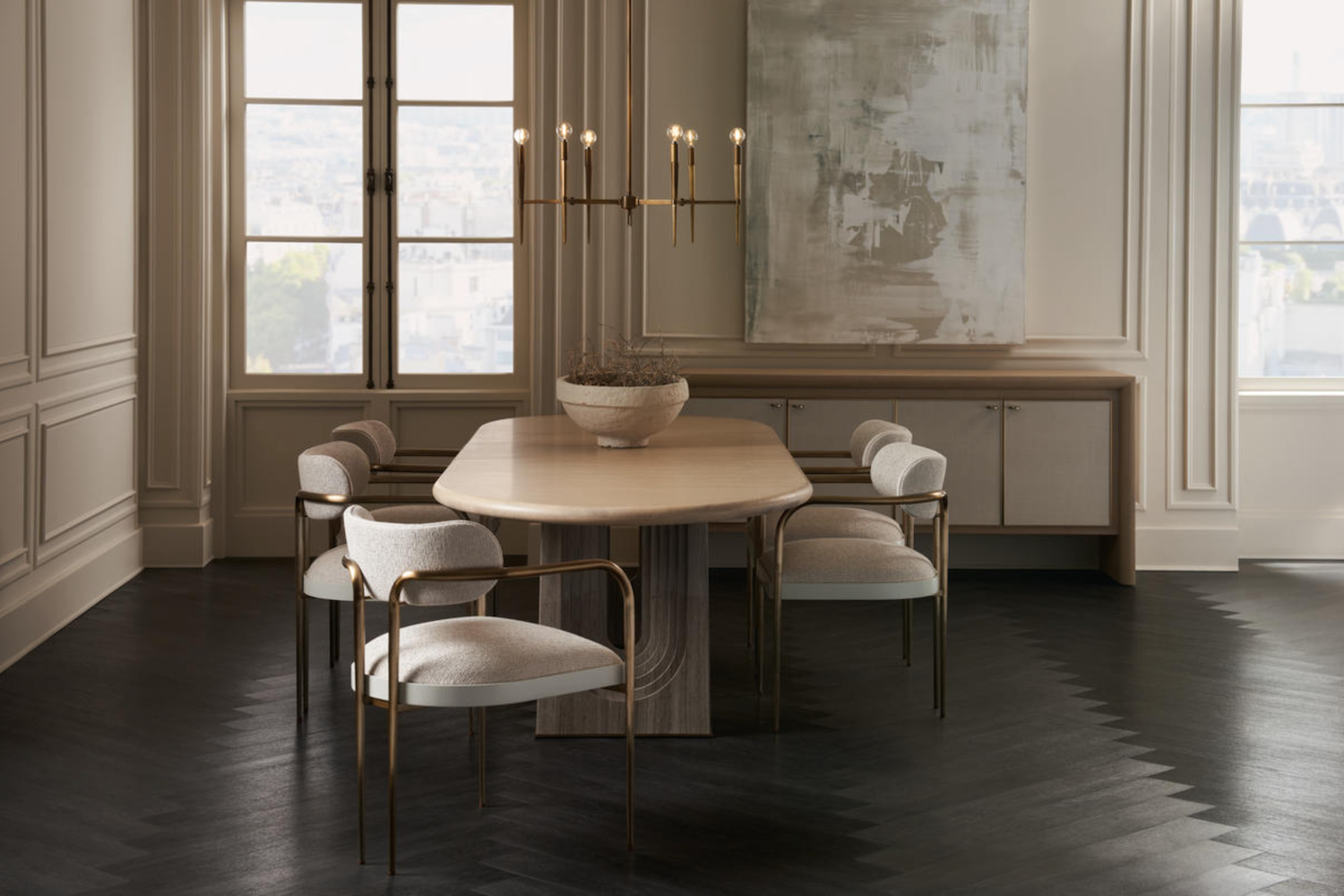The past two years have seen a flurry of AI-powered interior design startups hit the market. Some were cobbled together by amateurs, others launched by massive companies, and one was co-founded by Venus Williams. They all have their strengths and weaknesses, but none have conquered the market.
Less appreciated are the companies using AI to assist not the everyday furniture-buying public, but the brands and designers doing the selling. The past year has seen the rise of companies like Podium, a sales and client-communication platform; and Maker.Ai and Presti, which offer tools that replace product photography with generative AI. Now a new startup with another trade-focused AI pitch—DecorX—is entering the marketplace. The twist? It wasn’t started by a tech entrepreneur, but an industry insider: Mark Feng, the chairman and CEO of Markor Home Furnishings, which includes U.S. brands Caracole, A.R.T. Furniture, Jonathan Charles and Rowe.
Feng became interested in AI after attending a business school reunion and encountering a former professor who encouraged him to check out Dall-E, OpenAI’s early image-generation tool. Fascinated by the possibilities, he connected with a data scientist from Duke University to help him build a tool targeted at the specific needs of the furniture industry.
Like many of this class of startups, DecorX puts generative AI to work, writing text and cranking out images for a variety of purposes. Some of the other players in this space focus on a specific task, like generating e-commerce product imagery. DecorX can be used to make pictures of furniture, but it takes a kitchen-sink approach, using AI to do everything from writing product descriptions and romance copy to powering a conversational chatbot that retailers can deploy.
His hope is that B2B AI built by a furniture person will be uniquely situated to solve other furniture people’s needs. “There are AI startups out there that have raised millions of dollars, but in my conversation with furniture guys, they say, ‘This is actually a breath of fresh air: You actually know what the pain points are [because] you’re one of us,’” he says.
Perhaps the most ambitious aspect of DecorX is its attempt to solve a problem that has plagued AI-powered design tools since the beginning: None of the furniture is real. While AI has gotten fairly good at spitting out a compelling room design, all of the product is algorithmically generated and very much not available for sale. Even Wayfair has struggled with this concept: Its first AI tool, Decorify, took a backward route to attempt to solve the challenge, with decidedly mixed results. Its newest experiment, Muse, simply doesn’t try.
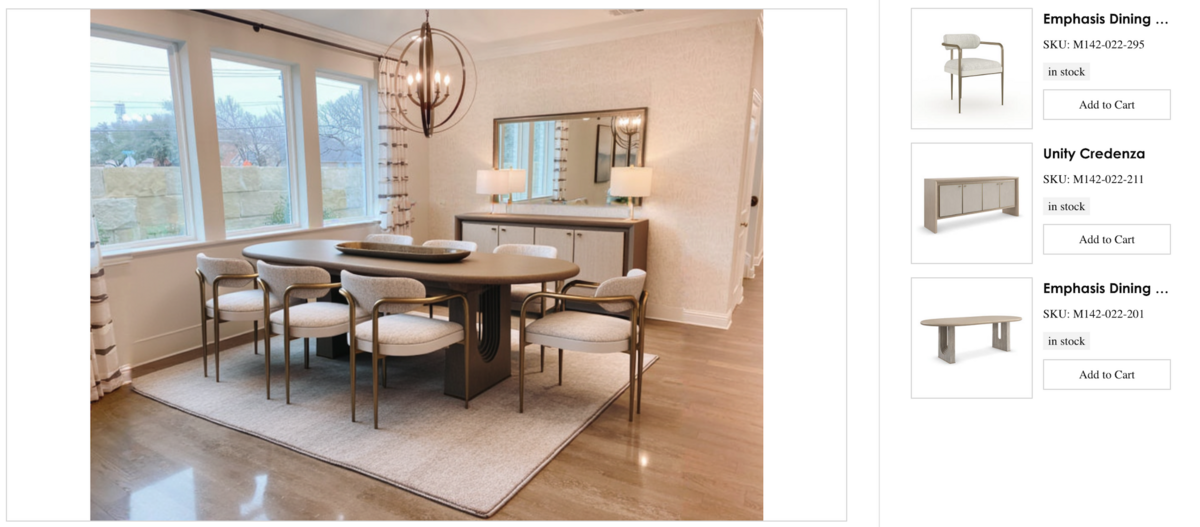
Using Caracole’s selection as a use case, Feng and his team built DecorX to drop real product into user-submitted photos. That means you can upload a picture of a living room, select a sofa you don’t like, and see how a Caracole piece would look in its place.
The functionality, currently available through Caracole’s trade portal, is still limited to certain SKUs (the company will roll out a wider selection at High Point Market this month). Like many AI-powered tools, it’s a work in progress, with plenty of disclaimers. The tool works best with well-lit photos taken head-on—shadows and angles confuse it and can lead to Dalí-esque contortions. Likewise, it is prone to creating “artifacts”—little bits of digital flotsam and jetsam that the AI injects into the final image.
However, with the right starting image and a little tweaking, DecorX can give you a good idea of what a Caracole piece would look like in situ. Feng says that after rolling out the tool as a sales aid in the company’s retail stores in China, the results have been positive. “The first group of users were in-store [designers]. In the past it took them weeks to do CAD,” he explains, and in some cases, using the software “cuts down on 90 percent of the time” it would take to create a visualization for a customer.
DecorX made its official public debut last month at the AI-focused HumanX conference (alongside a free AI-powered feng shui analysis tool). One of its earliest customers is e-commerce retailer Mathis Brothers, which will roll out the features in the months ahead. Looking beyond that, Feng says that DecorX will eventually offer a tool for interior designers that he describes as a Canva or Figma for the trade.
“I’m hoping to build a copilot for furniture retailers and interior designers,” he says. The goal is not to replace human talent, but “for them to be able to scale what they’re already good at.”
Correction 4/4/25
An earlier version of this article erroneously included an image by Moorestown, New Jersey-based design firm Widell + Boschetti, taken by photographer Brian Wetzel.




